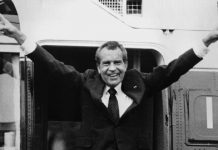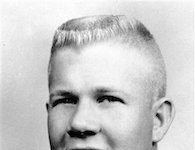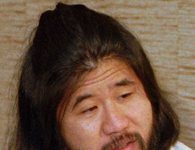On Aug. 4, 1964, the bodies of missing civil rights volunteers Michael Schwerner, James Chaney and Andrew Goodman were discovered in a dam outside Philadelphia, Miss. The three had been murdered by local Klansmen.
Bodies of Schwerner, Goodman and Chaney Found in Dam
In the summer of 1964, three major civil rights groups united to form the Council of Federated Organizations (COFO), dedicated to promoting equality for blacks in America. COFO organized a project called Freedom Summer that aimed to help register blacks to vote in Mississippi, one of the most oppressive states for African-Americans.
Hundreds of civil rights activists, black and white, traveled to Mississippi to take part in the project. Thousands of blacks registered to vote with great enthusiasm, while local whites reacted with anti-black violence across the state. Local police and Ku Klux Klan members harassed civil rights activists, trying to quell their determination.
On June 21, 1964, three Congress of Racial Equality (CORE) activists went missing: 24-year-old Michael Schwerner and 20-year-old Andrew Goodman, both Jewish volunteers from New York, and 21-year-old James Chaney, an African-American from Meridian, Miss. The three men had been arrested for speeding by Neshoba County Deputy Sheriff Cecil Price, who detained them until 10:30 p.m. and then ordered them to leave the county.
Their disappearance became national news. The CORE campaign suspected foul play and the FBI launched an investigation. It searched the area and found at least eight bodies of blacks who had been lynched, but no white bodies. It finally got a break in the case when it received a tip from a local white who was motivated by the FBI’s $25,000 for information.
On Aug. 4, the FBI discovered the bodies of Schwerner, Goodman and Chaney buried deep inside an earthen well. Schwerner and Goodman had each been shot in the heart. Chaney had been badly beaten and shot three times; “I have never witnessed bones so severely shattered,” said a doctor who examined Chaney’s body.
The story horrified the American public and alerted it to the level of oppression that existed in the South. The civil rights movement received greater media coverage and support in the wake of the murders.
“My husband, Michael Schwerner, did not die in vain,” said Rita Schwerner. “If he and Andrew Goodman had been Negroes, the world would have taken little notice of their deaths. After all, the slaying of a Negro in Mississippi is not news. It is only because my husband and Andrew Goodman were white that the national alarm has been sounded.”
How the Murders Were Carried Out
Schwerner, who was one of the most active organizers in creating “Freedom Schools,” had become a target for the Klan and local authorities, who called him “Jew Boy.” He worked closely with Chaney, who served as a local guide and drove Schwerner in a blue station wagon that became familiar to the Klan.
On June 16, 1964, Klansman waited outside Mount Zion Church in Longdale, Neshoba County, which Schwerner had established as a Freedom School. When the Klansmen found that Schwerner, who had left for Oxford, Ohio, to attend COFO training sessions, was not inside, they beat churchgoers and burned down the church.
Schwerner heard about the arson and decided to return to Mississippi to help the locals file complaints with the Department of Justice. He, Chaney and Goodman, a student who had just joined the movement, drove down to Mississippi and were on their way to Longdale on June 21, when Price pulled them over and arrested them.
The three men were detained and told that they could not make phone calls. Price contacted local preacher Edgar Ray Killen, who rounded up a group of Klansmen. The three activists were released, but their car was followed by Price and a gang of Klansmen. They were pulled over and taken to an unmarked dirt road, where they were shot at point-blank range by a former Marine named Wayne Roberts.
The “Mississippi Burning” Trial
Price, Rainey, Killen, Roberts and 14 others would go on trial beginning Oct. 7, 1967, on charges of conspiracy to deprive Schwerner, Chaney, and Goodman of their civil rights. James Jordan, one of the Klansmen involved in the murders, agreed to testify for the prosecution, offering a detailed description of the night of June 21.
On Oct. 20, the all-white jury convicted seven men, including Price and Roberts. Rainey and six others were acquitted, and one man had the charges dropped before the verdict. The jury was unable to reach a verdict on the three others, including Killen.
Judge William Harold Cox gave the seven guilty men sentences ranging from four years to ten years. “They killed one nigger, one Jew, and a white man—I gave them all what I thought they deserved,” he said.
In 2005, nearly 40 years after avoiding conviction, Killen was found guilty of manslaughter for recruiting the gang that killed Schwerner, Chaney, and Goodman. The 80-year-old Killen was given three consecutive 20-year sentences, a sentence that was upheld by the Mississippi Supreme Court in 2007.










